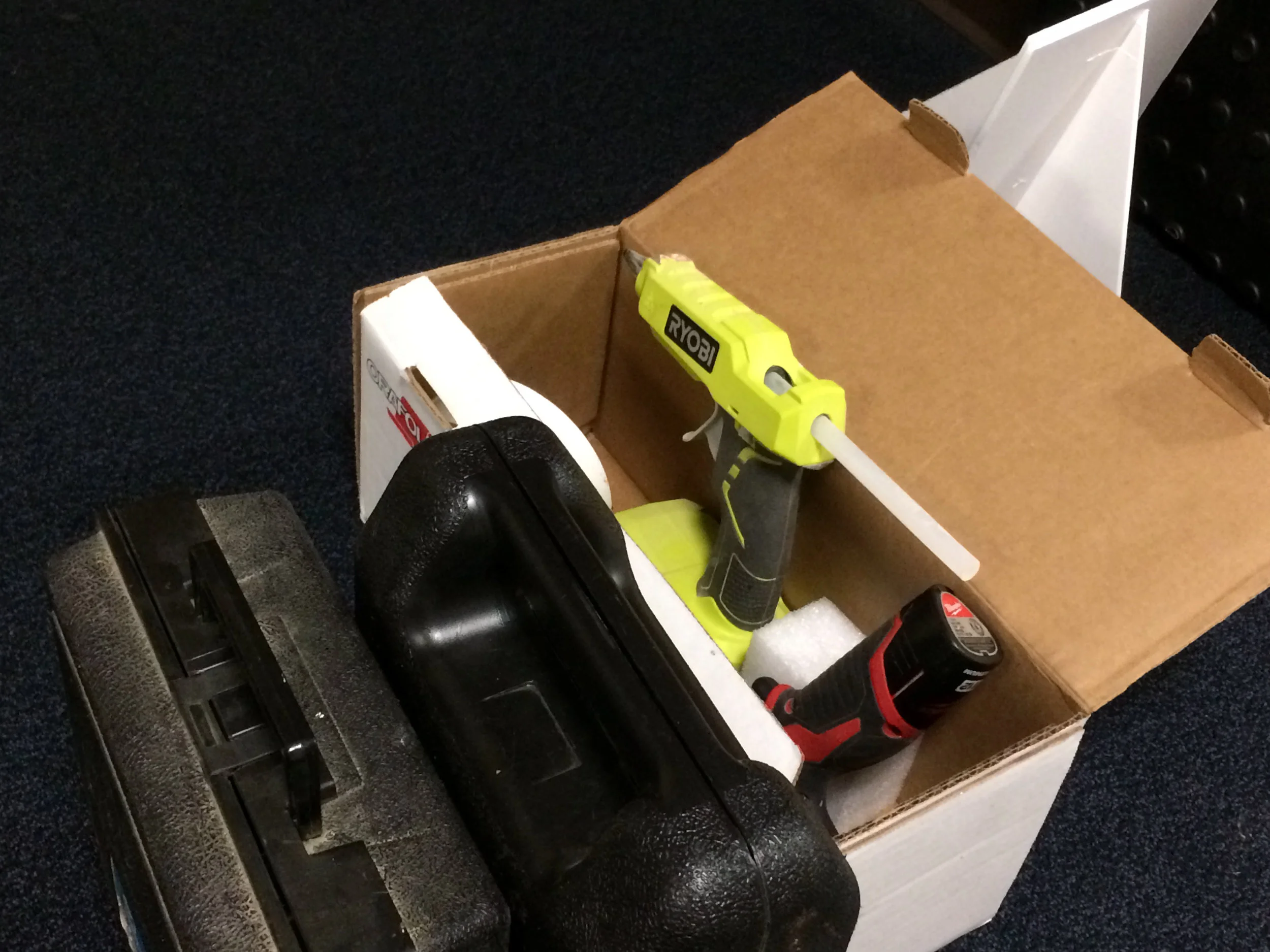Sharks Preview at Town Hall
/We love when people come to the museum to see our science exhibition work on display, but sometimes you have to take science to the people instead. This was in our minds as we went to Greenwich Town Hall today to set up our latest “mini exhibition” in one of their two display cases.
It’s always exciting to decide what we should highlight. Do we show off new acquisitions? Older objects that haven’t been on display in years?
This time we decided to try something a little different: A preview of an upcoming exhibition!
Photo by Kate Dzikiewicz.
Fans of the Bruce Museum’s Town Hall displays may recognize this background. The original artwork was painted by our exhibition preparator, Sean Murtha. We are very lucky to have such an adept artist on staff and try to showcase his contributions whenever possible.
Every task needs the proper tools. These are the tools that Senior Exhibition Designer Dan Buckley brought along. Thankfully, we didn’t end up needing most of them this time.
One tool that did come in handy was the tape measure. While we were fairly certain that we would have enough space for what we planned, there was just enough uncertainty to make it exciting (or stressful, depending on when you asked!).
“What is that?” asked the receptionist as we brought in our wrapped bundle.
It’s a shark!
From April 20, 2019 - October 27, 2019, the science exhibition Sharks will be on display at the Bruce Museum. This exhibit will highlight the evolution, biology, and behavior of sharks and confront the many myths and misconceptions that surround them. It will feature live sharks developing in eggs, life-sized shark replicas like this one, and almost 20 different shark jaws to compare and contrast.
Photo by Kate Dzikiewicz.
The shark fit!
It was tighter than anticipated, but the shark made it into the case and now is the museum’s proud ambassador to Town Hall.
This shark is a hammerhead, one of the most iconic of shark varieties. The odd head shape provides a number of benefits to the 9 hammerhead species. The surface of the “hammer” is covered with tiny sensory organs called ampullae of Lorenzini. These let the shark detect potential prey that it can’t see, like a stingray hiding beneath the sand.
If the shark wants to attack the stingray in the sand, it can pin the ray to the seafloor using its broad head. If the stingray manages to escape, the wide-set eyes of a hammerhead shark give it an amazing range of vision, far greater than that of an ordinary shark.
The shape of their skulls gives hammerhead sharks all sorts of tools for their arsenal and has helped them spread all over the world.
If you found this interesting, come on by when the exhibition opens on April 20. Preparations are going swimmingly, and we look forward to a feeding frenzy of shark education and enthusiasm. Until then, you can enjoy our display at Town Hall, but only until the end of December!
Kate Dzikiewicz, Paul Griswold Howes Fellow



















